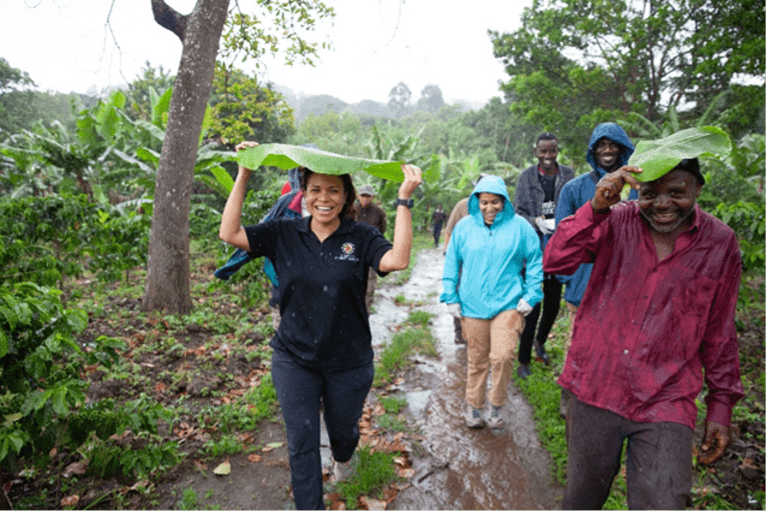TZ Winter Amp Day 7
Day 7: Friday, Jan 10th - Water sampling and Drive to Iringa
By Aishwarya Rao (Ash)
When we left the hotel on Friday morning, with instructions to pack just a bag for a weekend safari, little did I know that this would turn out to be one of the best days of the entire trip for me. Emmanuel and Isack, our two trusty drivers, accompanied us to the MUST campus to meet with Komanye and Marco, who would then take us water sampling with the interns.
When we got to MUST, the all-too-familiar feeling of running around to gather supplies and personnel set in. As no stranger to water sampling and field days, it was interesting to be on the other side of the table as we watched the interns gather all the required bottles and coolers. Naturally, curiosity got the better of me and I ran around a little bit with Marco and the crew and got extra sneak-peeks at the equipment we had seen the day before (cue Kid in Candyland music!!). The microbiology and food labs felt like home to me, and I could not stop being amazed at the robust testing equipment they had at MUST.
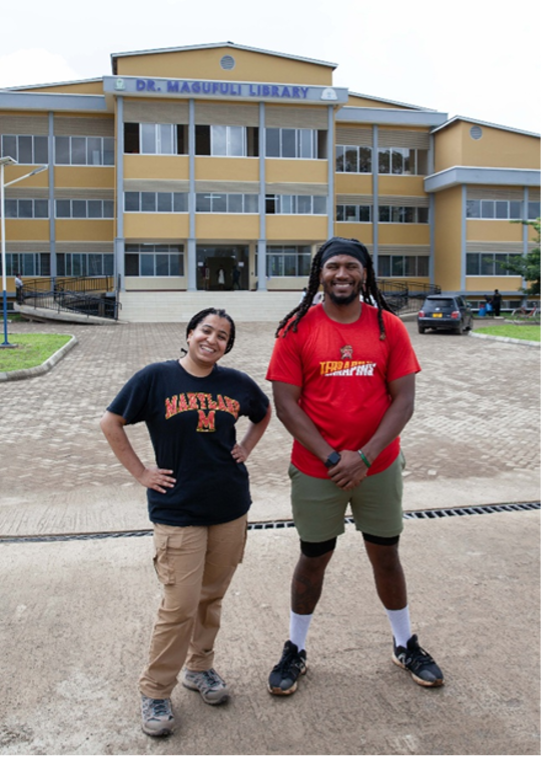 Left: Terp pride reps on the MUST campus
Left: Terp pride reps on the MUST campus
Once we had all the equipment and people packed in the Landcruiser and the Hilux, we set off to meet with the grower community at one of MUST’s collaborative sites. It came as no surprise that Tanzania’s agriculture is one of the largest contributors to its GDP. I was conceptually exposed to the differences in food security and nutritional security. Komanye explained to me that the combination of volcanic and Vertisol or mbuga black soil was agriculture-friendly and supported food crops that could also double up as cash crops such as mango, coffee and cashew. The road to the sites was bumpy but our conversations, peppered in with dance music that was on Emmanuel’s playlist, were never dull.
Once we got to the first sampling site, Tony showed me the bottles we were going to use. Instinctively, I looked for the autoclave tape and when I didn’t see any, Marco stepped in to explain to me that we were “pretend” sampling to understand the processes and appreciate the diversity of the sites. The water we collected was not going to be tested because Ibiyinka had plans for sampling on different schedules.
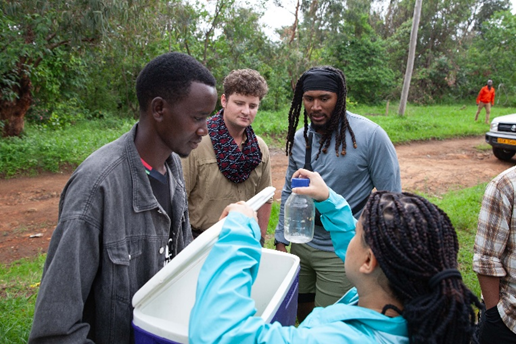
Right: Inspecting the bottles for autoclave tape as a measure of sterilization
After a brief welcome by the head honchos of the grower community, we made our way in the drizzle, slipping and sliding and using banana leaves as umbrellas, to the water reservoir from where irrigation water was piped into fields.
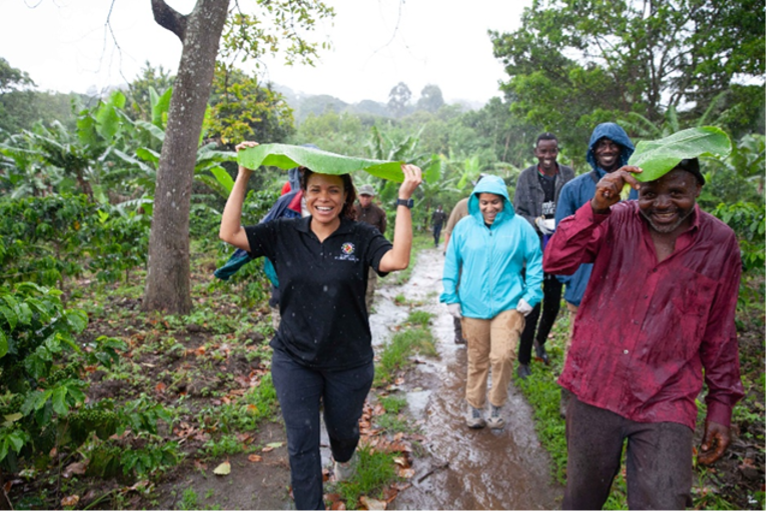 Left: 100% natural umbrellas!
Left: 100% natural umbrellas!
After a small explanation of the irrigation practices, Marco and Tony instructed me on how to sample the water. Into the canal I went, all raincoated up, the familiar feeling of being in a field back home came creeping in. The water was cool, but the color had me concerned. I learned that this was a concern for the farmers too.
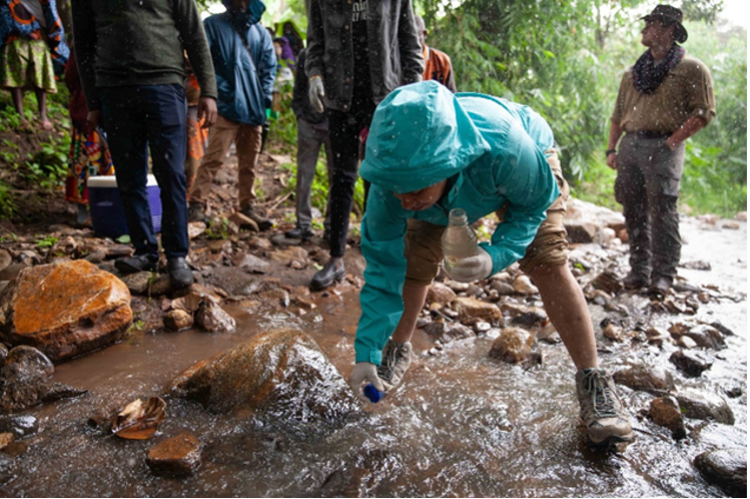 Right: Déjà vu of dissertation work was cleverly masked by smiles at being up close and personal with Tanzanian waters
Right: Déjà vu of dissertation work was cleverly masked by smiles at being up close and personal with Tanzanian waters
After we sampled at the first site, we gathered with the community members to address their concerns. Their issues resonated with me because some of them were similar to the ones we address in the major agricultural regions of the United States: the community’s concerns with chemical residues not being removed by water treatment plants; inflow of contaminants coming to farms downstream from those situated upstream; and pest snails. Time permitting, I would have hoped to go see the technologies used in the water treatment plants.
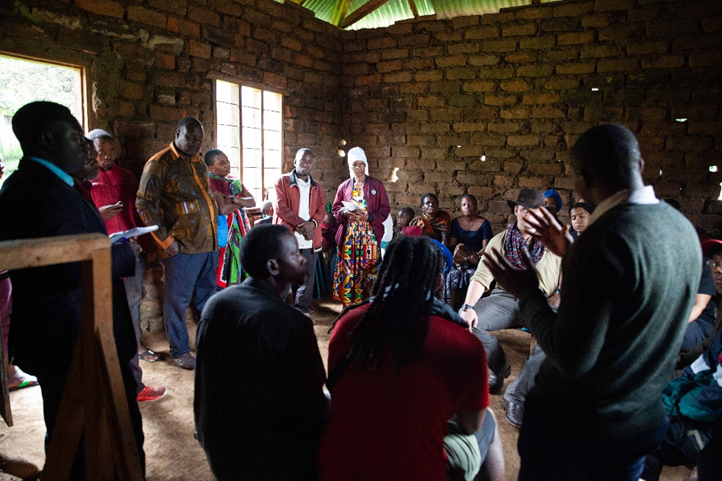
Left: Community engagement: extension education in its truest form
The growers also had a unique issue of pests targeting the grains and seeds that were stored post-harvest. This is a common issue seen in regions of high humidity. Marco and I had a discussion about certain fungal communities that grow on stored grains, resulting in chemotactically attracting pests, but due to time constraints, we were unable to communicate that to the growers. However, with promises to think about these concerns and return, we were extremely grateful to have had the community engage with us and set the wheels of thought in motion.
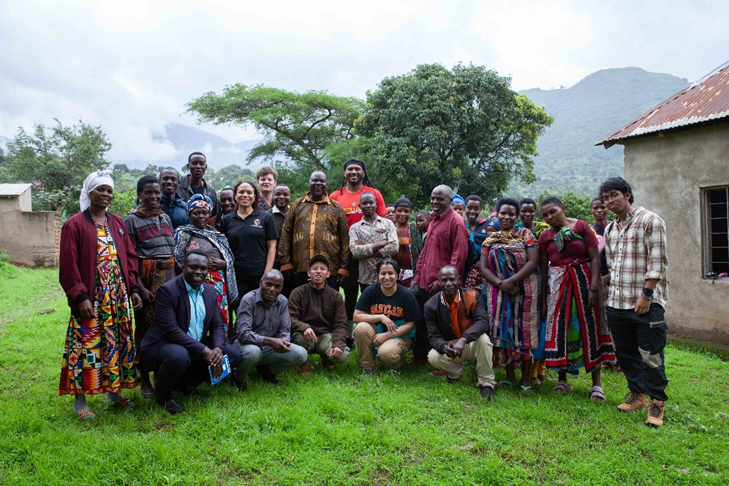
Right: Grower communities can be a strong driving force behind questions that fuel science
The second sampling site we went to was another slippery trek down to a point of confluence of two sources. One was clean and came from the river, and the other was spent agricultural water.
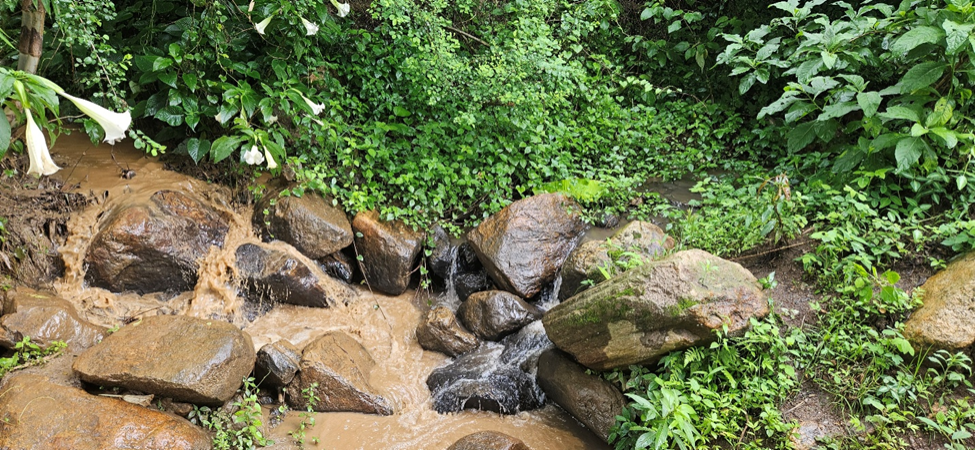 Left: The irrigation return flow water canal on the left merges with the clean river on the right
Left: The irrigation return flow water canal on the left merges with the clean river on the right
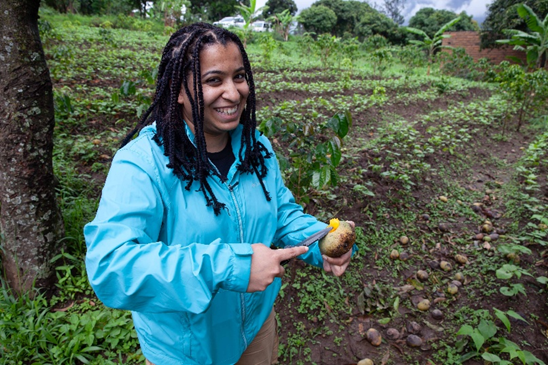
Below: Mangolicious!
While trekking down to the canal, we passed through groves of mango and guava trees as well as coffee plantations. This reminded me of my summers as a child in India. The highlight of the trek, however, was being called a “Tree-eater” because I was tasting all the flora Tanzania had to offer! I had to stay true to my Food Science background! At the third site we visited, only Tony went down to collect water, while we stayed on the path. Soon after, we went back to MUST to bid adieu to some of the people and the equipment and then got back on the road to head back to Iringa for the night, from which we would head to Ruaha National Park.
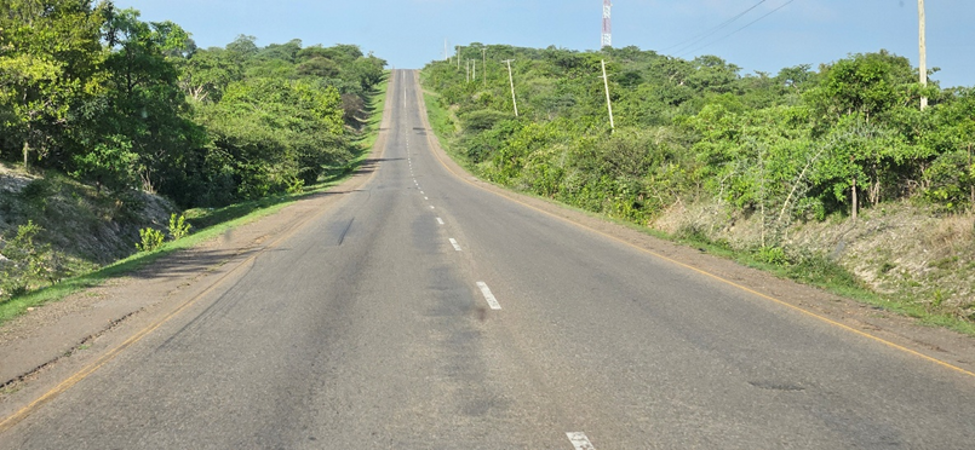 Left: The road to Iringa
Left: The road to Iringa
The anticipation and excitement of being able to experience an African Safari was palpable as we made our way to Iringa. We drove for about 5 hours through Majombe, Igawa and Makambako. The drive was a true sight for sore eyes as we drove past the beautiful, lush green hillsides.
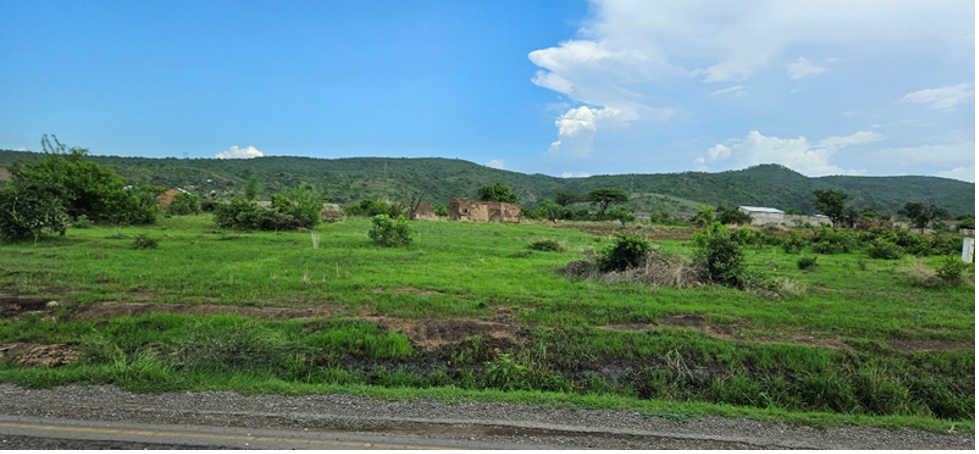
Above: The lush hillsides of the Makambako
The weather went from blue skies and some clouds to menacingly dark clouds. However, the Tanzanian skies proved that after every storm comes a rainbow and we were treated to a double rainbow! It almost seemed like we were driving to the base of the rainbow!

Left: Two rainbows in one!
The next big town was Mafinga and that will always have a special place in our hearts. Though it was dark by the time we got in, our favorite sight did not disappoint, and we’ve all made a mental note to let Beyonce know that she owns a gas station there!
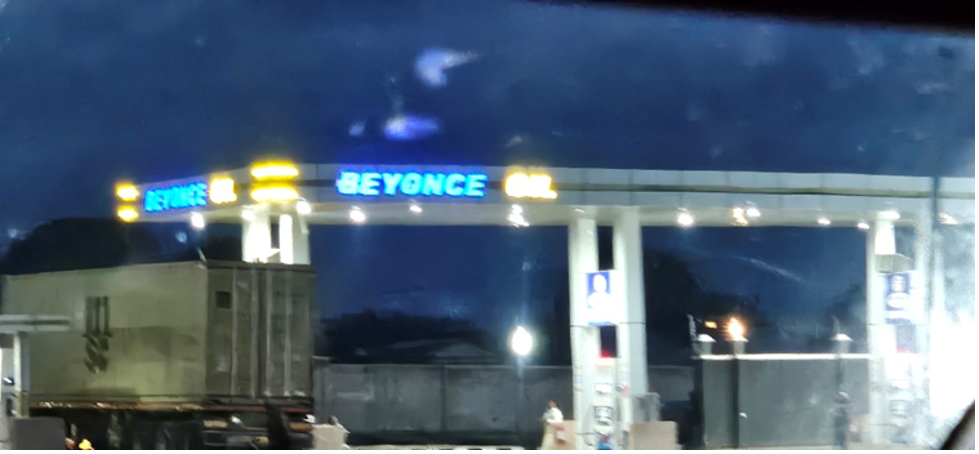 Right: Our new favorite gas station
Right: Our new favorite gas station
As we all got into Iringa tired and ready for bed, we had a quick dinner of chapattis and curry at the Clocktower restaurant and headed to bed at the Ruaha University Catholic University hostel.

